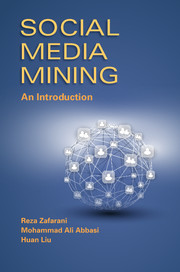9 - Recommendation in Social Media
from Part III - Applications
Published online by Cambridge University Press: 05 July 2014
Summary
Individuals in social media make a variety of decisions on a daily basis. These decisions are about buying a product, purchasing a service, adding a friend, and renting a movie, among others. The individual often faces many options to choose from. These diverse options, the pursuit of optimality, and the limited knowledge that each individual has create a desire for external help. At times, we resort to search engines for recommendations; however, the results in search engines are rarely tailored to our particular tastes and are query-dependent, independent of the individuals who search for them.
Applications and algorithms are developed to help individuals decide easily, rapidly, and more accurately. These algorithms are tailored to individuals' tastes such that customized recommendations are available for them. These algorithms are called recommendation algorithms or recommender systems.
Recommender systems are commonly used for product recommendation. Their goal is to recommend products that would be interesting to individuals. Formally, a recommendation algorithm takes a set of users U and a set of items I and learns a function f such that
f : U × I → R (9.1)
In other words, the algorithm learns a function that assigns a real value to each user-item pair (u, i), where this value indicates how interested user u is in item i. This value denotes the rating given by user u to item i. The recommendation algorithm is not limited to item recommendation and can be generalized to recommending people and material, such as, ads or content.
- Type
- Chapter
- Information
- Social Media MiningAn Introduction, pp. 245 - 270Publisher: Cambridge University PressPrint publication year: 2014



